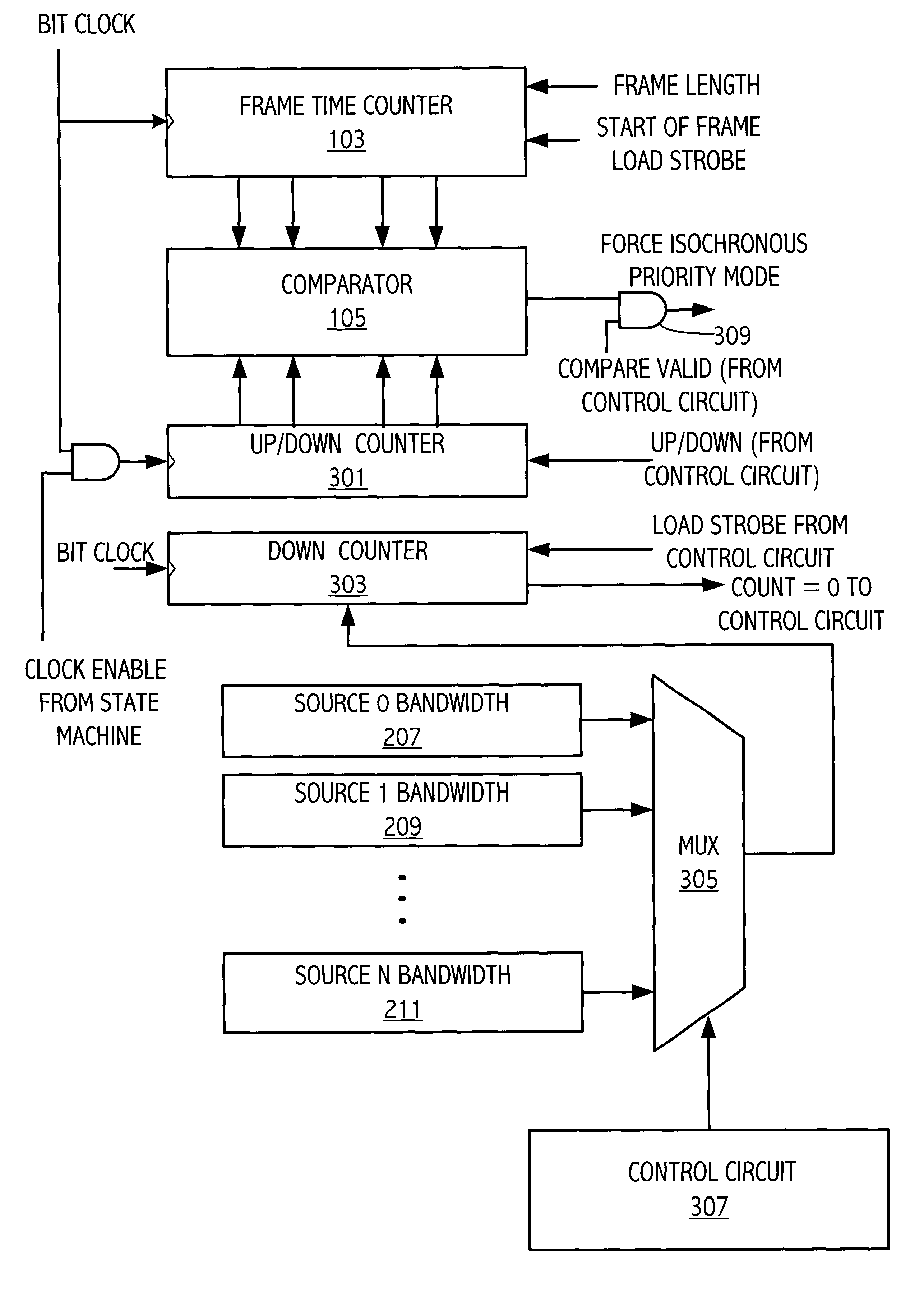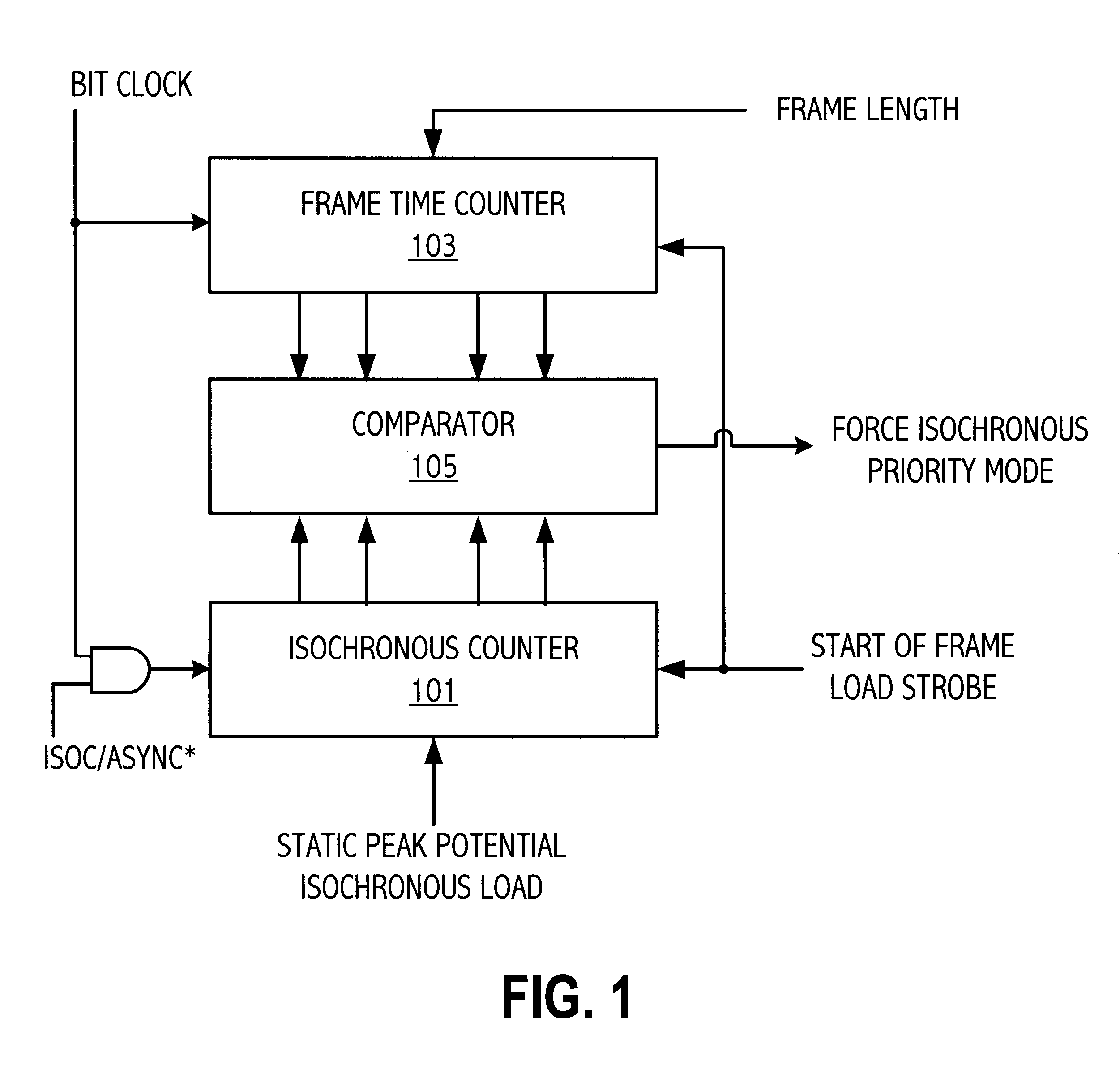Dynamic scheduling mechanism for an asynchronous/isochronous integrated circuit interconnect bus
- Summary
- Abstract
- Description
- Claims
- Application Information
AI Technical Summary
Problems solved by technology
Method used
Image
Examples
Embodiment Construction
)
In an exemplary system in which the present invention is utilized, as described more fully in application Ser. No. 09 / 098,874, entitled BUS OPTIMIZED FOR PERSONAL COMPUTER TRAFFIC, incorporated by reference above, isochronous data and asynchronous data are transferred over a bus in a personal computer system. The bus transfers data in frames of a predetermined length. Isochronous data is guaranteed a specified amount of bandwidth and worst-case latency during each frame on the bus. For example, the bus may guarantee that up to 30% of the frame can be utilized for isochronous transfers. Initially during the frame, asynchronous transfers are granted priority over isochronous transfers (to minimize the latency of the asynchronous transfers), and thus the bus is in asynchronous priority mode. According to the bus protocol, each interface on the bus tracks the amount of isochronous data transmitted and the bus switches to isochronous priority mode only if necessary to guarantee a predet...
PUM
 Login to View More
Login to View More Abstract
Description
Claims
Application Information
 Login to View More
Login to View More - R&D
- Intellectual Property
- Life Sciences
- Materials
- Tech Scout
- Unparalleled Data Quality
- Higher Quality Content
- 60% Fewer Hallucinations
Browse by: Latest US Patents, China's latest patents, Technical Efficacy Thesaurus, Application Domain, Technology Topic, Popular Technical Reports.
© 2025 PatSnap. All rights reserved.Legal|Privacy policy|Modern Slavery Act Transparency Statement|Sitemap|About US| Contact US: help@patsnap.com



